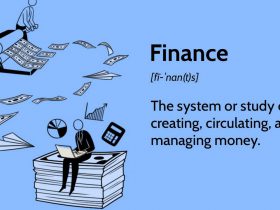You have just a few weeks left to take advantage of one of those almost-too-good-to-be-true opportunities. You can invest in Treasury I bonds, also called Series I savings bonds, which pay an interest rate of 9.62%.
In one straightforward scenario explained below, you invest $75,000 in such so-called I bonds. “Where else could you get a 9% plus return on an investment that is backed by the full faith and credit of the U.S. government?” said Paul Schatz, president of Heritage Capital.
But as of Nov. 1, the Treasury will change the rate. It’s up for reset every six months.
And many experts predict the new rate will be around 6%.
I Bonds: How They Work
I bond interest is a combination of two interest rates. One is a fixed income rate, which stays the same for the 30-year life of the bond. The other is an inflation-adjusted rate, which is adjusted each May and November. That variable rate is based on changes in the non-seasonally adjusted consumer price index for all urban consumers, known as the CPI-U.
It’s that variable component of the bond rate that experts expect will drag the Nov. 1 interest rate down to around 6%. The March through August CPI-U was 3.01%, says Ken Tumin, founder and editor of DepositAccounts.com, a bank account comparison site. July’s change was a 0.01% decline. August’s change was -0.04%. Tumin said, “If the September change is similar to August’s and July’s, we’ll get a 6-month change of 3.01%. Annualized, that becomes just over 6.02%.”
Even a rate of approximately 6% is far higher than many rival rates. The $262.4 billion Vanguard 500 Index Fund (VFINX) sports a trailing 12-month yield of just 1.43%.
The highest 12-month web-only $25,000 certificate of deposit listed on DepositAccounts.com carries an annual percentage yield (APY) of 2.75%.
Bottom line? You get to keep the 9.62% rate for six months if you buy one or more bonds before Nov. 1. “From April 2023 through October 2023, the I bond will pay whatever the Treasury announces this Nov. 1,”?Tumin said.
Limits On I Bonds
The main drawback to I bonds is that normally the most you can invest in an I bond yearly is $10,000.
But by using various legal loopholes, a married couple can buy tens of thousands of dollars worth of additional I bonds annually.
Here’s how those legal loopholes work:
Generally, you must buy the bonds by setting up a TreasuryDirect.gov account.
Investing Through Your Business
If you are self-employed, your business entity can buy up to $10,000 worth of I bonds a year. Your business must create its own TreasuryDirect.gov account. Your business would use its taxpayer identification number. If you have more than one business, each can buy you one of these bonds. “These would have to be actual business entities ¡ª whether they are sole proprietorships, partnerships, an LLC or an S corporation,” Tumin said.
If your spouse has their own business, which files a return, that business can buy an I bond for your spouse.
Buying Bonds Through A Living Trust
Living trusts can also buy you an I bond annually. Each trust must have its own taxpayer identification number. Michael Wagner, co-founder of Omnia Family Wealth, says it is unlikely that someone would create a trust for the sole purpose of buying bonds. “In my world, people tend to have such trusts already for other purposes, such as estate planning, buying a home and asset protection,” Wagner said.
For a married couple to get two I bonds this way, they would need two separate trusts.
Buying Bonds For Your Kids
In addition, if you have three children who are minors, you and your spouse can each buy up to an additional $10,000 of I bonds for each child.
The easiest way to make that purchase is electronically at TreasuryDirect.gov. But if you buy a paper bond so each kid can see and touch them, you are limited to a maximum of $5,000 per bond, not $10,000.
Also, the only way you can buy a paper bond is by using your tax refund. You must fill out IRS Form 8888.
Still, afterward, you can convert a paper bond to an electronic one.
Can You Spare $75,000?
So, how much could you invest in I bonds? For starters, you and your spouse can each buy $10,000 worth directly. If you are an entrepreneurial, dual-career couple who each run a business, your businesses could buy each of you another $10,000 worth. And if your financial plan includes two living trusts, those entities could buy an I bond for each of you. That would be a third $20,000 investment.
Further, if you have three children, you could buy up to $5,000 worth of bonds for each of them. That’s another $15,000.
If you can afford to divert that much cash and take the time to perform each purchase along with their required paperwork (on paper or electronically), that’s $75,000 earning 9.62% now. That’s $7,215 annually. “I’d say that makes it worthwhile,” Schatz said.
You can cash in an I bond after 12 months. But if you cash one in before it is five years old, you will forfeit the last three months of interest.
“I’ve been recommending I bonds to clients since last spring,” Schatz said. “Especially to those who keep unusually large cash balances, which earn much too little interest. These bonds are a great alternative.”
A version of this story was published on Sept. 22, 2022.
Follow Paul Katzeff on Twitter?at?@IBD_PKatzeff?for tips about personal finance and strategies of the best mutual funds.














Leave a Reply